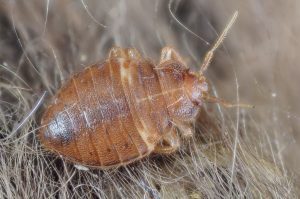Bed-Bug-Management-Strategies
Effective Bed Bug Eradication Techniques

Pest control Auckland bed bugs
Factors Contributing to Bed Bug Rise
Bed bugs, once thought to have been eradicated post-World War II, are on the increase and seemingly have an unstoppable march out of the bedrooms and into places we haven’t seen them before, such as offices, public transport, and more. Certainly, this was what was reported around the recent Rugby World Cup in France in 2023. Famous for feeding on human blood and the ability to hide, leaving people in fear of these unseen blood-sucking villains. But should we be worried? And what can you do about their relentless march into places away from the bedroom? Well, let’s take a step back and have a look at the basics, and then we can understand that there isn’t too much to worry about.
Understanding Bed Bugs
Bed bugs are wingless insects that belong to the same class of insects as stink bugs/cicadas you find in the garden, Hemiptera. Hemiptera are also called true bugs, and all have a proboscis (like a straw) for sucking fluids, that is no moving or chewing mouth parts. Mostly they suck sap from garden plants but in the case of bed bugs, they suck blood for food. Bed bugs were thought to have first come from caves where they fed on bats. Post-World War II, there were high numbers of bed bugs mainly in apartments, and they were effectively dealt with by pest controllers using DDT, often leaving the entire apartment dripping with what is now considered a very toxic (to humans) chemical. As DDT is so toxic to humans, it is no longer an option in the management of bed bugs. So why do we have bed bugs on the rise over the last few decades? A couple of reasons are aiding their increase. Firstly, there are some bed bugs that are resistant to commonly used insecticides—pyrethroids. But mainly their rise is due to the toxicity and efficacy of the chemicals used today are significantly less inferior to the DDT used in the late '40s. Bed bugs have fluid-to-fluid contact with their host much like mosquitoes so there is a risk of disease transfer. However, unlike mosquitoes that are responsible for the spread of terrible sickness in humans, bed bugs currently do not spread disease. Yet, scientists think this could possibly change in the future. So, given all this, is there a reason to be concerned? Well, yes and no.

Dr Cooper, A World leader in bed bug research
We can look to the USA and how they have managed their Bed bug eradication issue of the last few decades. The NPMA, the association of pest controllers in the USA, appointed Dr Richard Cooper to educate their members and the public on how to effectively deal with bed bugs. Dr Cooper started training the NPMA pest controllers at a time where spraying chemicals willy-nilly was increasing the distribution and numbers of bed bugs. He offered a fresh look at the management of bed bugs and more effective methods than chemicals.
Bed Bug Management Strategies
Safe Heat
Given some bed bugs are resistant to chemicals, killing bed bugs is a hard one, right? Well, no. Bed bugs are very susceptible to heat. I am not talking about a naked flame, but rather steam. Yes, a steamer which you probably have in your home for cleaning is actually a very effective bed bug killer. In fact, all spiders and insects are susceptible to heat. There are pest control companies that can seal up a home or business and install heaters to increase the temperature in the structure to over 60°C+ for hours resulting in all insects and spiders perishing. Very effective but this method is also very expensive and not always practical. A handheld steamer’s steam head held against a bed bug(s) will make short work of them and their eggs. This is as the temperature in the steam head gets to over 100°C, and yes, that’s very hot! Steamers are good to use on slat bed bases and where bed bugs are in cracks and crevices.
Vacuuming bed bugs
Where there are large numbers of bed bugs, if you place a stocking inside the vacuum tube and rubber band it in place on the outside, you can catch large numbers of bed bugs quickly. Once you have them, remove the stocking, and tie off the end. Pop the tied-off stocking into the freezer for a minimum of 3 days and they will all have perished.
Bed bug encasement
Where a mattress has holes in it or there is an infested fabric box bed base, you need to encase these. Why? Because bed bugs like to live in the gaps between hard surfaces (e.g., wooden joins); chemicals won’t reach them inside a fabric box bed base. Encasement traps the bed bugs inside the structure and starves them to death.
Pitfall traps
Pitfall traps are effective at catching bed bugs. Dr Cooper has published a study showing that he could effectively treat a mild infestation of bed bugs with traps only (no chemicals!).
Spray and Walk (Crawl) Away
Most sprays available to the public are not very effective on bed bugs and make the situation worse by driving bed bugs further into hiding and into other rooms in the apartment/building. A chemical spray should be the last thing you use when managing bed bugs.
So How Do Bed Bugs Find You?
They follow a CO2 gradient you set up when you are in one place for a while. For example, when you sleep. They follow the gradient to you which results in initial bites on your neck/face and sometimes your forearm. It also helps that you are asleep and do not notice them. If you are on your bed reading a book, you will see or feel them and take evasive action. This is why areas where people that have short stays and/or are awake such as buses/planes or offices are not the mainstay of bed bugs. Firstly, the CO2 gradient can’t be set up due to people moving around/air currents and secondly, you’re mostly awake. There will, of course, be an exception to every rule.
Effective Bed Bug Eradication Techniques
Yes, bed bugs are on the rise for several reasons, but should we panic that these blood-sucking villains are coming to bed near you soon? Yeah, NAW, not really. Blood-sucking and unseen hiding critters make for good media fodder, but realistically they are not that common in NZ. And there are some simple things you can do to control the situation without having to use nasty chemicals. And you probably have the most effective bed bug killing machine in your cleaning cupboard already: the humble steamer.
